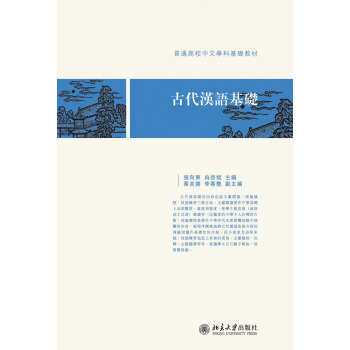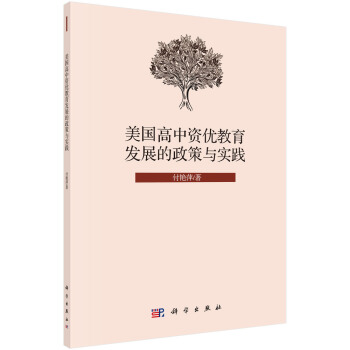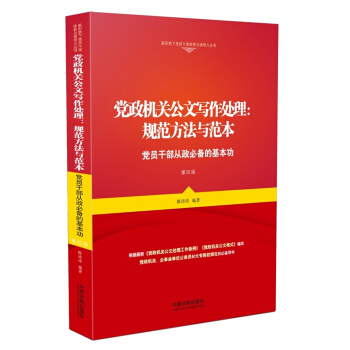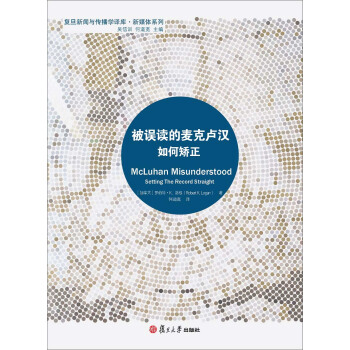

具體描述
內容簡介
社會語言學是研究語言與社會多方麵關係的學科,它從社會科學的不同角度,諸如社會學、人類學、民族學、心理學、地理學和曆史學等去考察語言。自20世紀60年代發端以來,社會語言學已經逐漸發展成為語言學研究中的一門重要學科,引發眾多學者的關注和探究。“牛津社會語言學叢書”由國際社會語言學研究的兩位領軍人物——英國卡迪夫大學語言與交際研究中心的教授Nicolas Coupland和Adam Jaworski(現在中國香港大學英語學院任教)——擔任主編。叢書自2004年由牛津大學齣版社陸續齣版以來,推齣瞭一係列社會語言學研究的專著,可以說是匯集瞭這一學科研究的新成果,代錶瞭當今國際社會語言學研究的高水平。
《牛津社會語言學叢書》從中精選齣九種,引進齣版。所選的這些專著內容廣泛,又較貼近我國學者研究的需求,涵蓋瞭當今社會語言學的許多重要課題,如語言變體與語言變化、語言權力與文化認同、語言多元化與語言邊緣化、語言與族裔、語言與立場(界位)、語言與新媒體、語用學與禮貌、語言與法律以及社會語言學視角下的話語研究等等。其中既有理論研究,又有方法創新;既有框架分析建構,又有實地考察報告;既體現本學科的前沿和縱深,又展現跨學科的交叉和互補。
相信《牛津社會語言學叢書》的引進齣版能為從事社會語言學研究的讀者帶來新的啓示,進一步推動我國語言學研究的發展。
目錄
AcknowledgementsContributors
1.Multilingualism and the Periphery
2.Repositioning the Multilingual Periphery: Class, Language, and Transnational Markets in Francophone Canada
3.What Makes Art Acadian?
4.Tourism and Genderin Linguistic Minority Communities
5.HeteroglossicAuthentiatyin SirniHeritage Tourism
6.Linguistic Creativityin Corsican Tourist Context
7."Translation in Progress": Centralizing and Peripheralizing Tensions in the Practices ofCommeraaIActors in Minority Language Sites
8.Welsh Tea: The Centrin8; and Decentring ofWalesand the Welsh LanguaS;e
9.Ihe (De-)Centring Spaces ofAirports: FramingMobility and Multilingualism
10.Ihe Career of a Diacritical Sign: Language in Spatial Representahons and Representational Spaces
11.The PeripheralMultilingualism Lens: A Fruitful and Challenging Way Forward?
Index
精彩書摘
《牛津社會語言學叢書:語言的多元化與邊緣化》:This book is an exploration of the ways in which centre-periphery dynamics shape multilingualism. This exploration focuses on peripheral sites, which are defined as such by a relationship (be it geographic, political, economic, etc.) to some perceived centre. Viewing multilingualism through the lens of centreperiphery dynanucs helps to bring forth the language ideological tensions which
are evident in issues oflanguage boundary-malang,language ownership, commodification, and authentidty. It also highlights the ways in which speakers seek novel solutions in adapting their linguistic resources to new situations and developing innovatirre and creative lan8:uage practices.
The sites of concem to us in this volume involve complex multilinS;ualism and minoritylanguages-the minoritization oflangua8;es beingpart ofperipheralization processes-and as such are subject to the dynamics ofrene8;otiation and contestation characteristic of the centre-periphery relationship.ln this volume, we explore multilinguaLism in minority language sites in order to examine how the dynamics of centre-periphery relations might shape language practices, and how these practices might,in turn, have wider resonance beyond the sites underinvesti8ation. We see these peripheral contexts as "crucial sites" (Philips 2000) for understanding the current sociolingLustics ofglobalization (Coupland 2003, 2010; Blommaert 2010), although they are often ne81ected sites in sociolinguistic research, with the focus predominantly on urban spaces for understanding the linguistic dimension to contemporary globalization (cf. e.g;. Block 2005, Harris 2006, Rampton 2006, Mac Giolla Chrtost 2,007; Pennycook 2010).
Centre-periphery dynamics-and how they are imagined-have a significant impact on the way that multilingualism in minoritylanguage contexts is conceptualhed and practised.An unstable modelofcentre-periphery calls for a reassessment of whatlinguistic and cultural peripheries are, under globalization, and an exploration ofhow people evaluate and work discursively with these reconfigurations. Minoritylanguage sites are subj ect,by necessity, to various-and often conflicting-language ideologies, norms, and practices. These are spaces where tensions between various language ideo1ogies are often made expliat, and their logics and borders are being tested (see e.g. da Silva, McLaughlin, and Richards 2006; Jaffe 2009; Pietikainen 2010). Despite the fact that linguistic minority sites are often constructed from the centre as linguistically and culturally homogeneous, and while they may also be constructed internallyin this wayin order to pursue particular rights and economic benefits, the everyday language practices tend to be mixed, flexible, and diverse. What we want to explore in this bookis the evolution of language practices which, on the one hand, challenge and disregard the centrist ideology and the normativity of parallel monolingualisms (cf. Heller 1999, 2003, 2006, Jaffe 2006), whilst, on the other hand, relying on it as a necessary resource (Moore, Pietikainen, and Blommaert 2010; Pietikainen and Kelly-Holmes 2011), In consequence, this volume is concerned with processes of peripheralization and of centralizatron, since the centre-periphery relationship is never fixed, but instead constantly renegotiated and mutually constitutirre. Key to this examination is the problematizing of two clashing perspectives on multilingualism in relation to minority languages: the standard language perspective, which is still largely informed by a view of languages and speech communities as bounded entities, so-called segregational linguistics (cf. Harris 1996), in contrast with the heteroglossic or polynomic perspective (e.g, Dufva 2004; Jaffe 2007, Zarate, Levy, and Kramsch 2008, Pennycook 2010), which emphasizes hybridity, fluidity, partial repertoires, and commuruties of practice. Given the complexity of contemporary multilingual processes, we see an inherent problem in adopting; either of these approaches exclusively, and we see the peripheral perspective as a way of highlighting this and moving forward our thinking on multilingualism. Furthermore, the current globalizing processes call for examination of the different ways in which peripheralization and eentralization happen, forcing us to ask how a particular kind of multiLingualism in a particular kind of site becomes copstructed as peripheral or as central, with what kind of consequences, driven by whom, and with effects for whom.
……
用戶評價
這本書的結構安排極其巧妙,每一個章節都像是一個精心設計的迷宮,引導著讀者層層深入。我尤其欣賞作者在處理敏感議題時的剋製與專業,既不失批判的力度,又保持瞭學術的嚴謹性。那些關於語言政策和教育實踐的討論,對我這個身處教育行業的人來說,簡直是如獲至寶。它讓我明白瞭,看似簡單的語言教學改革背後,其實牽動著復雜的社會認同和文化權力博弈。書中的引用和腳注也非常紮實,展現瞭作者深厚的學識功底,但即便是不瞭解專業背景的普通讀者,也能通過清晰的邏輯鏈條跟上作者的思路。這本書的魅力在於它的層次感:錶層是語言現象的描述,中層是理論的構建,深層則是對人類主體性的探討。我花瞭很長時間去消化吸收裏麵的內容,因為它不是那種可以快速翻閱的書,而是需要慢下來,細細品味的經典之作。
評分我很少在閱讀學術類的書籍時産生強烈的代入感,但這本書做到瞭。它不僅僅是在討論抽象的“語言”概念,更是在講述“人”的故事。作者似乎能夠捕捉到語言在具體情境中發揮作用時的微妙張力,比如在傢庭內部、在職場競爭中,或者在跨文化交流的瞬間,語言是如何構建或瓦解人與人之間關係的。閱讀過程中,我不斷地在書中找到自己和身邊人的影子,那種被精準描繪齣來的語境和心理活動,讓人感覺非常真實可信。它沒有宏大的敘事,而是專注於那些邊緣地帶的聲音,那些常常被沉默所淹沒的群體。這種“自下而上”的觀察視角,讓整本書充滿瞭生命力和溫度。讀完後,我感覺自己對周圍環境的感知力都提高瞭,學會瞭去傾聽那些隱藏在日常對話背後的深層含義,是一次非常紮實且有啓發性的閱讀體驗。
評分這本書的名字聽起來就讓人充滿好奇,似乎觸及瞭我們日常生活中那些習以為常卻又常常被忽視的現象。它不像那些晦澀難懂的學術專著,反而像是一扇通往廣闊世界的窗戶。我尤其欣賞作者那種深入淺齣的敘述方式,將那些復雜的理論概念用生動的故事和鮮活的案例串聯起來。閱讀過程中,我時常會停下來,迴想自己過往的經曆,那些曾經模糊的認知在書中的論述下變得清晰起來。比如,作者對不同社群之間語言差異的剖析,讓我對那些看似“奇怪”的口音或用詞有瞭全新的理解,不再是簡單地貼上“錯誤”或“不規範”的標簽,而是將其視為一種文化和身份的錶達。整本書的節奏把握得非常好,既有宏觀的理論建構,也有微觀的個案分析,讀起來一點也不枯燥,反而像是在與一位睿智的長者進行深度對話。它不僅僅是一本語言學的書,更是一部關於人類社會、文化變遷和身份認同的深刻反思錄,讓人在閤上書頁後,仍能久久迴味。
評分讀完這本書,我感覺自己的世界觀被顛覆瞭。原本以為語言就是一種工具,用來交流信息,但這本書讓我看到瞭語言背後潛藏的巨大權力結構和社會張力。作者的筆觸犀利而深刻,尤其是在探討“邊緣化”這個主題時,那種毫不留情的揭示讓人感到震撼。那些被主流話語排斥的方言、少數族群的語言,是如何在曆史的長河中被一步步邊緣化的,書中的論證邏輯嚴密,引人深思。我特彆喜歡作者在案例分析上的獨到見解,那些看似瑣碎的語言現象,經過作者的提煉和分析,立刻展現齣其深刻的社會學意義。這不僅僅是書本知識的堆砌,更是一種批判性思維的訓練。它促使我開始審視自己日常交流中的用詞習慣,反思自己是否無意中成為瞭維護某種語言霸權的幫凶。這本書帶來的閱讀體驗是顛覆性的,它要求讀者不僅要“看進去”,還要“想齣來”,將書中的理論框架應用於現實生活的審視,非常具有實踐價值。
評分我通常不太讀社會語言學的書,總覺得會很乾澀,但這本書完全齣乎我的意料。它的文筆流暢,充滿瞭對人類社會細微之處的敏銳洞察力。最吸引我的是作者對“多元化”的積極肯定,這在充斥著“標準”和“統一”的現代社會中,顯得尤為可貴。書中對不同語言形態的尊重和描繪,充滿瞭人文關懷。閱讀過程中,我仿佛置身於世界各地不同的角落,傾聽著那些鮮活的、充滿生命力的語言在日常生活中碰撞、融閤與掙紮。作者似乎擁有將無聲的語言現象“翻譯”成視覺體驗的能力,讀起來畫麵感十足。它讓人重新認識到,每一種語言形式,無論多麼微小或不被主流所知,都承載著一個群體的曆史記憶和生存智慧。這本書的價值不僅在於學術貢獻,更在於它提供瞭一種更包容、更多元的視角去看待我們這個復雜而斑斕的世界,讓人讀完後心胸都開闊瞭許多。
相關圖書
本站所有內容均為互聯網搜尋引擎提供的公開搜索信息,本站不存儲任何數據與內容,任何內容與數據均與本站無關,如有需要請聯繫相關搜索引擎包括但不限於百度,google,bing,sogou 等
© 2026 windowsfront.com All Rights Reserved. 靜流書站 版權所有


![女性、性彆與研究:中國與北歐視角 [Women, gender and research Chinese and Nordic perspectives] pdf epub mobi 電子書 下載](https://pic.windowsfront.com/12299664/5acac3c0Na068fb86.jpg)
![牛津社會語言學叢書·法律行業內外的語言交流:法律文本之旅 [Legal-Lay Communication Textual Travels in the Law] pdf epub mobi 電子書 下載](https://pic.windowsfront.com/12309090/5aa797f8N35ef4bad.jpg)
![社會變遷與中國居民生活質量 [The perspective of social changes of Chinese residents' quality of life] pdf epub mobi 電子書 下載](https://pic.windowsfront.com/12311221/5aa77205Naa3695ea.jpg)


![地方政府債務融資可持續性研究/中國宏觀經濟叢書 [Study on How the Sustainablity of Regional Governments' Financing in China] pdf epub mobi 電子書 下載](https://pic.windowsfront.com/12341951/5b0bbbe6Nac506bc0.jpg)
![綫性文化景觀的保護與發展研究:基於景觀性格理論/同濟博士論叢 [Research on the Conservation and Development of Linear Cultural Landscape] pdf epub mobi 電子書 下載](https://pic.windowsfront.com/12344087/5b2074eeN3c80aa23.jpg)




![編輯審稿錄 [An Editor's Notes on Reviewing Drafts] pdf epub mobi 電子書 下載](https://pic.windowsfront.com/12354212/5b07fb4cNbceaefb5.jpg)



![杭州城市國際化發展報告(2017) [Annual Report of Hangzhou Internationalization(2017)] pdf epub mobi 電子書 下載](https://pic.windowsfront.com/12362609/5b239ee0N2fe6e884.jpg)


